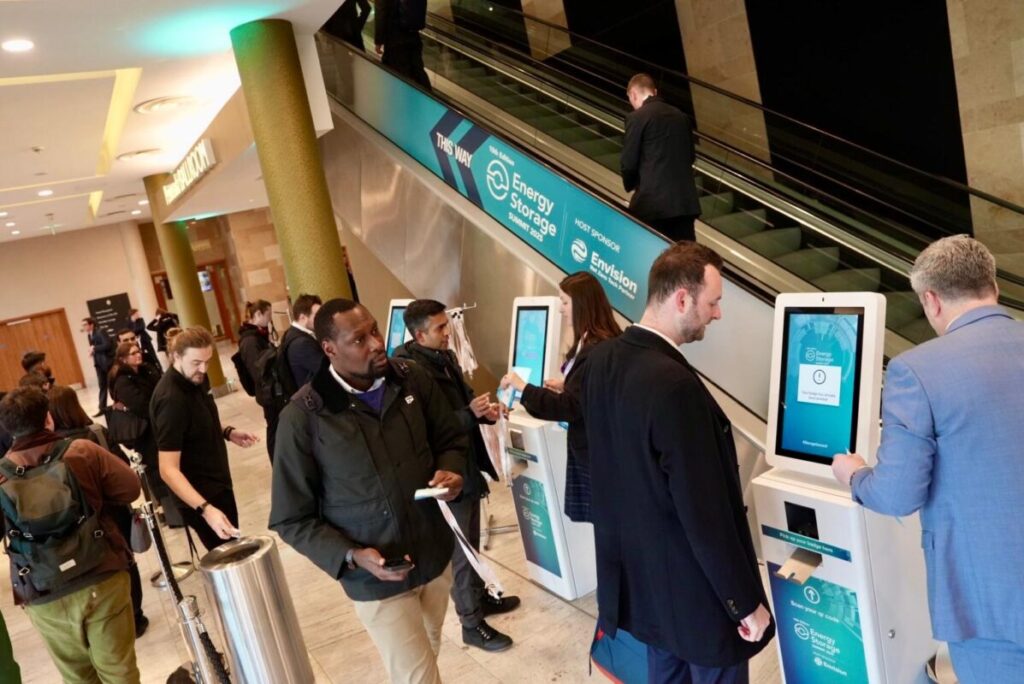
On a panel at the Energy Storage Summit in London, Alasdair MacMillan, head of connections policy at Ofgem said grid connection reforms will ultimately mean “a clearer signal to networks about what to build”.
On Friday (14 February), Ofgem released its minded-to verdict on the proposed grid connection reforms put forward by the National Energy System Operator (NESO) and will announce its final decision in March. MacMillan further stated the reforms will provide “more investor confidence that your project will connect”.
Energy storage developers do not seem so sure. Bex Sherwood, head of development at Field, said that, although “not for lack of trying”, no one is confident in their chances of getting into Gate 2 under the new process.
“We have lived and breathed connection reform”, Sherwood continued, “and may still have to down tools on a project we have spent £1 million on because we are unlikely to get a Gate 2 offer”.
For Sherwood, the speed at which NESO’s reforms have been developed means there are errors in the methodology. “We’ve seen high level decisions mandated on arbitrary zone maps that aren’t based on system needs. Using planning status and counter signature dates for grid does not signify readiness – and if it does it doesn’t take into account deliverability or viability.”
Another issue taken with the final proposal put forward by NESO was the reduction of the penalty fee projects that fail to deliver key milestones once in the queue must pay. Sherwood said the process has been “wrongly incentivised”.
This is something that NatPower UK managing director John Sturman also took issue with.
Taking a more diplomatic view, Sturman pointed out that everyone agrees there is a need to get rid of ‘speculators’ in the queue. The issue, for him, is that NESO got involved in the zonal plan, a move that Sturman saw as market interference – “let the market decide where the projects should go”.
Long-duration assets entering the queue
Sturman further commented that NESO’s proposals have “no allowance” for larger assets with longer duration, leading to a “network of battery storage assets baked in at just 2-hour duration”, not enough to support the network or bring down consumer bills.
Oonagh O’Grady, vice president of international origination for long-duration energy storage (LDES) firm Hydrostor pointed out that the absence of LDES in the proposals brings major uncertainty into the market. The need for clarity around timings that the new queue process is meant to provide is “critical” for LDES investment, given the long lead time on the technology.
However, O’Grady noted that in the government’s Clean Power 2030 plan (CP30), LDES and shorter-duration storage are separated. This is in part due to the lack of LDES that is likely to come online before 2030, but it is a move O’Grady said is welcome.
There is, however, a need for more clarity on how the grid connection queue reform will fit with other initiatives like CP30, the contracts for difference (CfD) scheme, and the new cap-and-floor investment mechanism for LDES.
CEO of Masdar Arlington, Matt Clare, said the new queue system leaves a “policy gap” between projects at a distribution level that are over 100MW, leaving them to fall through the cracks; Ofgem needs to “step in and sort something out”, proving that not every eventuality has been covered yet.
This, for Clare, is not a bad thing, simply the result of the speed at which NESO and Ofgem have had to move. Conceding it is not a popular opinion, Clare said the two firms have done “a lot of good work”.
“It’s not perfect and I understand developers’ frustrations, but they are also partly to blame.”
Ofgem’s MacMillan reiterated that all of the suggested reforms have been through a “fast but robust” policymaking process, adding that there were no issues raised during the panel that Ofgem was not already aware of.
“In an ideal world, more time would have been nice but there is a real need for speed, which I appreciate won’t be of comfort. The queue has grown astronomically and we need to decarbonise as fast as possible.
“It was always the case that large-scale grid reform would create winners and losers; NESO had to draw the line somewhere.”

